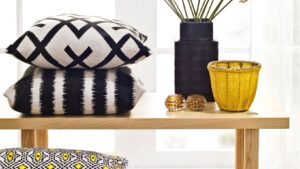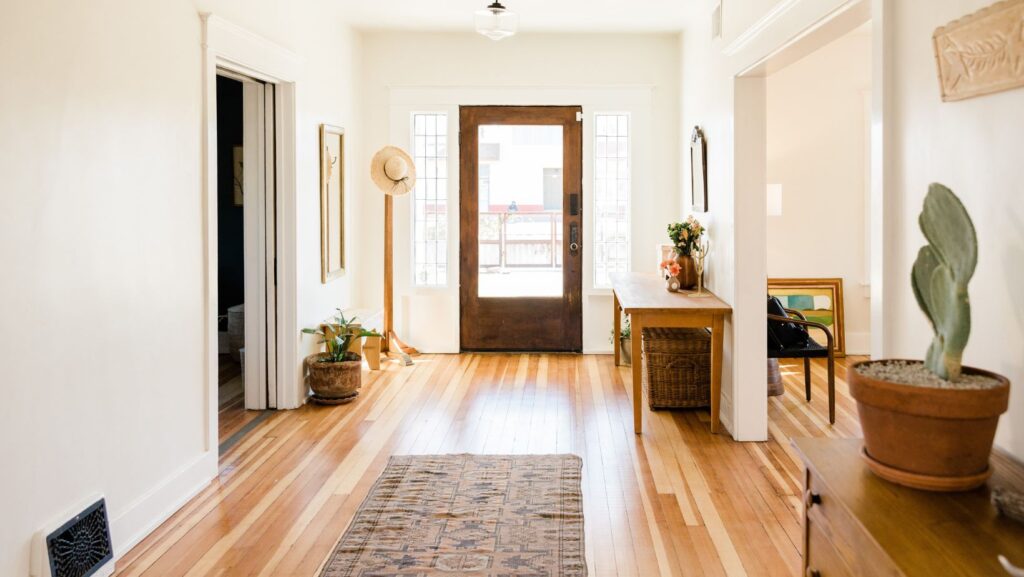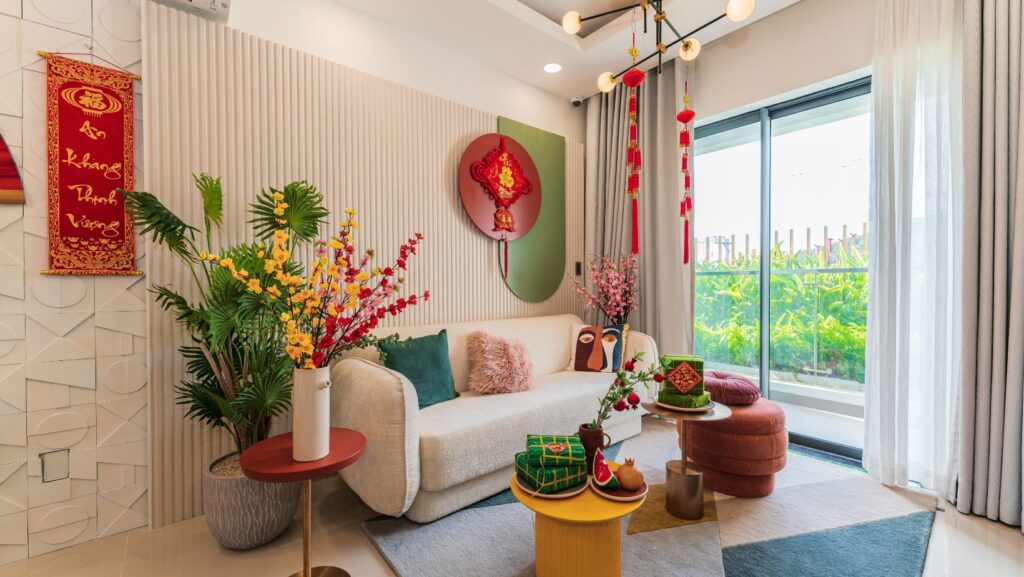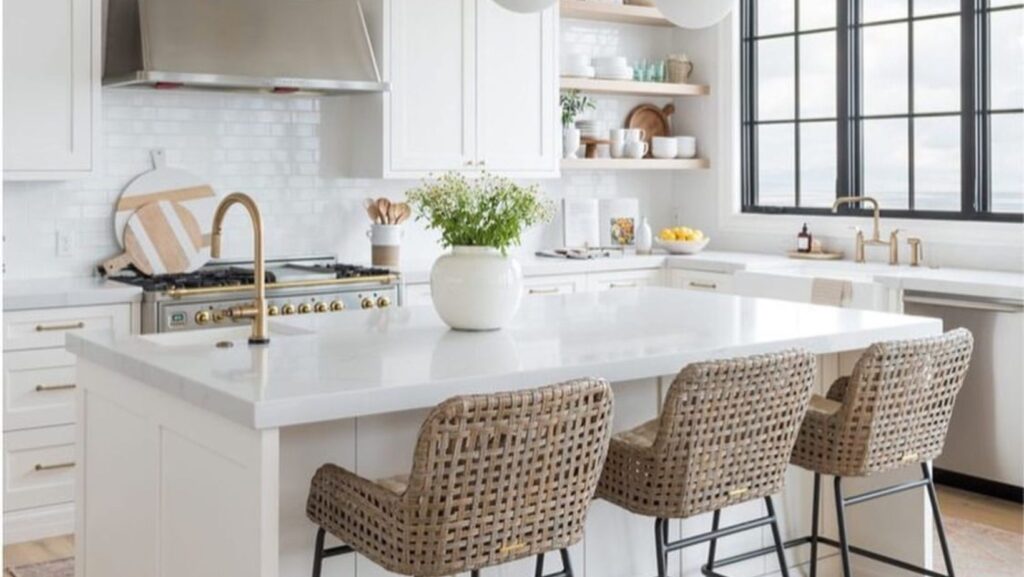Key Takeaways
- Cultural Significance: African home decor deeply reflects the continent’s history, art, and traditions, integrating motifs that represent various tribes and their stories.
- Unique Styles and Designs: The decor includes vibrant textiles, handcrafted furniture, and striking artwork, each contributing to an inviting atmosphere that celebrates African heritage.
- Textiles as Key Elements: Fabrics like Kente and Mudcloth play a crucial role in African decor, adding texture and color to spaces while embodying cultural significance.
- Regional Variations: From North to Southern Africa, decor styles vary, showcasing local materials and artistic expressions that highlight the continent’s diversity.
- Blending Styles Effectively: To incorporate African decor, one should create focal points, mix textures, use earthy tones, and balance modern with traditional elements for a cohesive look.
- Sourcing Authentic Pieces: Support local artisans by shopping ethically in markets, online platforms, or participating in cultural events to discover genuine African decor that honors craftsmanship.
African home decor brings a vibrant and rich aesthetic that transforms any living space. With its deep-rooted cultural significance and diverse styles, it reflects the continent’s history, art, and traditions. From bold patterns to earthy tones, African decor showcases unique craftsmanship that tells a story.
Incorporating African elements into home design not only enhances visual appeal but also fosters a sense of connection to the wider world. Whether it’s through handcrafted furniture, textiles, or striking wall art, these decor pieces infuse warmth and character into homes. Embracing this style allows individuals to celebrate the beauty of African heritage while creating an inviting atmosphere.
African Home Decor
African home decor showcases vibrant styles and profound cultural significance. It combines artistry with functionality, creating spaces that celebrate heritage and tradition.
Cultural Significance
 Cultural significance defines African home decor. It embodies history, spirituality, and community through unique designs. Artisans integrate symbols and motifs that represent various African tribes, narrating stories passed down through generations. Each piece often reflects beliefs, rituals, and values, offering insight into the rich tapestry of African culture. By incorporating these elements, individuals support sustainable practices while honoring the craftsmanship of local communities.
Cultural significance defines African home decor. It embodies history, spirituality, and community through unique designs. Artisans integrate symbols and motifs that represent various African tribes, narrating stories passed down through generations. Each piece often reflects beliefs, rituals, and values, offering insight into the rich tapestry of African culture. By incorporating these elements, individuals support sustainable practices while honoring the craftsmanship of local communities.
Unique styles and designs characterize African home decor. Influences range from traditional to contemporary interpretations, featuring bold colors and intricate patterns. Key elements include:
- Textiles: African fabrics like Kente, Ankara, and Mudcloth bring vibrancy and texture. They adorn walls, furniture, and accessories.
- Furniture: Handcrafted wooden furniture, often showcasing intricate carvings, provides both utility and aesthetic appeal.
- Artwork: Sculptures and paintings made from materials like wood, metal, and clay depict wildlife and cultural themes, enhancing personal spaces.
- Accessories: Masks, baskets, and pottery add layer and depth, serving both decorative and functional purposes.
Incorporating these elements creates a cohesive atmosphere that resonates with Africa’s diverse heritage while being accessible to modern sensibilities.
Key Elements of African Home Decor![]()
 African home decor incorporates distinct elements that highlight cultural significance and aesthetic appeal. This style vibrantly showcases textiles, artwork, and handcrafted accessories to create an inviting environment.
African home decor incorporates distinct elements that highlight cultural significance and aesthetic appeal. This style vibrantly showcases textiles, artwork, and handcrafted accessories to create an inviting environment.
Textiles and fabrics stand out as fundamental elements of African home decor. Kente cloth, originating from Ghana, features bright colors and geometric patterns, representing cultural heritage. Mudcloth, a handmade Malian fabric, adds texture with its bold black-and-white designs. These textiles can be used as wall hangings, throw pillows, and table runners, infusing any space with warmth and vibrancy. Additionally, sisal and jute rugs provide natural textures, emphasizing the connection to African earth and landscapes.
Artwork and Sculptures
Artwork and sculptures embody storytelling and cultural representation in African home decor. Traditional masks, artifacts, and carvings showcase the craftsmanship of various tribes, often symbolizing spiritual beliefs and social values. Wall art depicting wildlife, landscapes, and community life captures the essence of African heritage. Sculptures made from wood, stone, or metal create striking focal points. These pieces not only serve decorative purposes but also invoke conversations about Africa’s rich history and artistry, enhancing the overall decor.
Popular African Home Decor Styles
African home decor showcases a blend of traditional and contemporary elements, reflecting the continent’s rich cultural tapestry. Each style carries unique characteristics, showcasing regional influences and artistic expressions.
Traditional vs. Contemporary
Traditional African home decor embodies age-old design principles, emphasizing authenticity and cultural significance. It often incorporates natural materials, vibrant textiles, and handcrafted items like woven baskets and wooden sculptures. Patterns and symbols hold meaning, telling stories of heritage and community.
Contemporary African decor introduces modern interpretations of traditional elements. This style often features minimalistic designs that incorporate African motifs into modern furniture and art. The use of neutral color palettes alongside bold, indigenous textiles enhances versatility, appealing to various design preferences. Contemporary designs create a seamless connection between historical roots and current aesthetic trends.
Regional Variations
African home decor varies significantly across regions, reflecting local cultures and traditions.
- North Africa: This region emphasizes intricate tilework, ornate lanterns, and rich textiles like Berber rugs. The decor often combines elements from Arab, Berber, and Mediterranean influences.
- West Africa: West African decor highlights bold patterns found in Kente and Adinkra cloth. Wooden furniture, often adorned with carvings representing local customs, plays a crucial role.
- East Africa: The decor showcases bright colors and natural materials. Maasai Shuka fabric and handcrafted pottery contribute to vibrant living spaces. Art depicting wildlife and nature also features prominently.
- Southern Africa: This region embraces mixed media, including beadwork and metal sculptures. The use of woven reeds and grasses for baskets creates functional art pieces.
Understanding the regional variations in African home decor offers insight into the diverse artistic expressions that define the continent’s rich heritage.
Incorporating African Home Decor in Your Space
Incorporating African home decor enriches interiors with cultural depth and vibrant aesthetics. By blending styles and sourcing authentic pieces, individuals can create unique spaces that celebrate African heritage.
Tips for Blending Styles
- Choose a Focal Point: Select a statement piece, such as a colorful tapestry or a handcrafted sculpture, to anchor the room.
- Mix Textures: Combine various materials like wood, metal, and natural fibers to add visual interest and warmth.
- Incorporate Earthy Tones: Use a color palette inspired by nature, featuring browns, ochres, and greens, to create harmony throughout the space.
- Layer Patterns: Integrate traditional African fabrics, like Kente and Mudcloth, to achieve layers of pattern without overwhelming the design.
- Balance Modern and Traditional: Pair contemporary furniture with traditional decor elements for an eclectic yet cohesive look.
- Emphasize Natural Light: Use sheer curtains or open layouts to highlight textures and colors of the African decor, enhancing overall ambiance.
- Visit Local Markets: Explore artisan markets and craft fairs for genuine, handcrafted decor items that reflect local cultures.
- Shop Ethically: Purchase from businesses that prioritize fair trade and support local artisans, ensuring the economic upliftment of communities.
- Browse Online Platforms: Use reputable websites specializing in African decor, offering curated selections from various regions while ensuring authenticity.
- Network with Collectors: Connect with collectors or enthusiasts to gain insights on sourcing unique pieces and verifying their cultural significance.
- Support Nonprofits: Engage with organizations that promote African artisans by selling their work, providing a platform for authentic pieces with meaningful stories.
- Attend Cultural Events: Participate in exhibits or festivals that showcase African art, offering opportunities to discover and purchase distinctive items.
Unique Blend of Culture and Artistry
Embracing African home decor brings a unique blend of culture and artistry into any living space. By integrating handcrafted pieces and vibrant textiles, individuals can create an inviting atmosphere that celebrates Africa’s rich heritage. Each element not only enhances the visual appeal but also tells a story, connecting the home to the continent’s diverse traditions and values.
Incorporating these decor styles fosters a deeper appreciation for the craftsmanship and history behind each item. As individuals explore this vibrant aesthetic, they contribute to the preservation of cultural narratives and support local artisans. This journey into African home decor is not just about beautifying a space; it’s about honoring a legacy that enriches both the home and the broader community.


